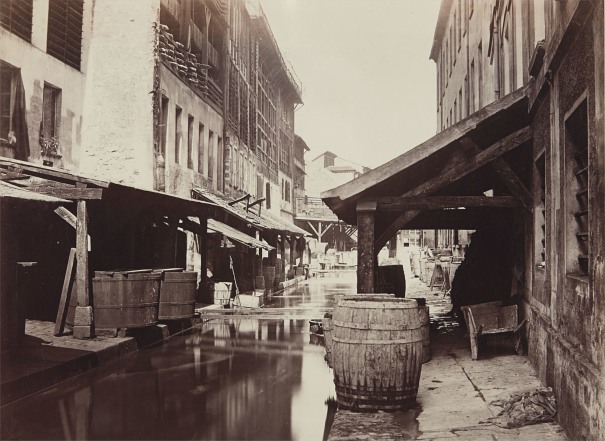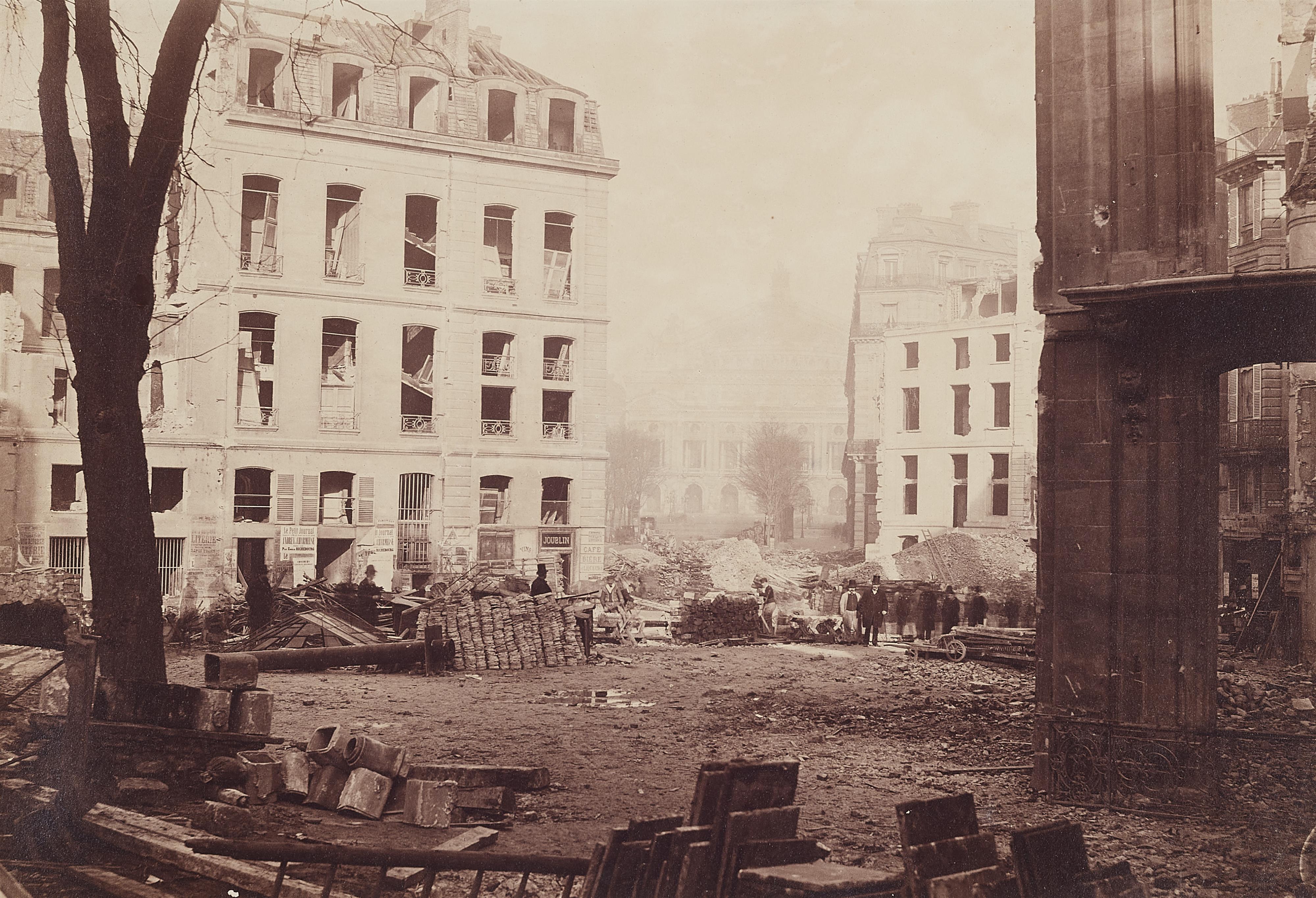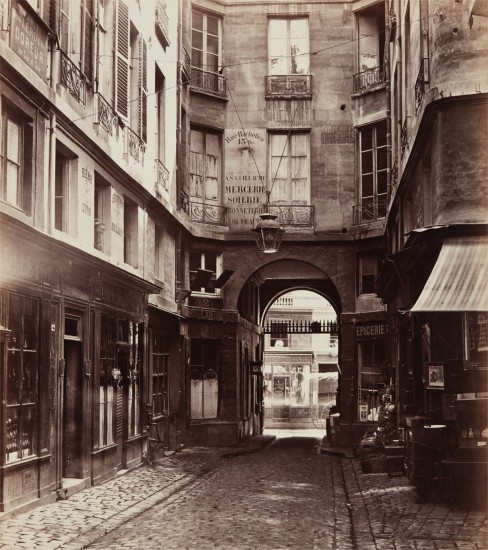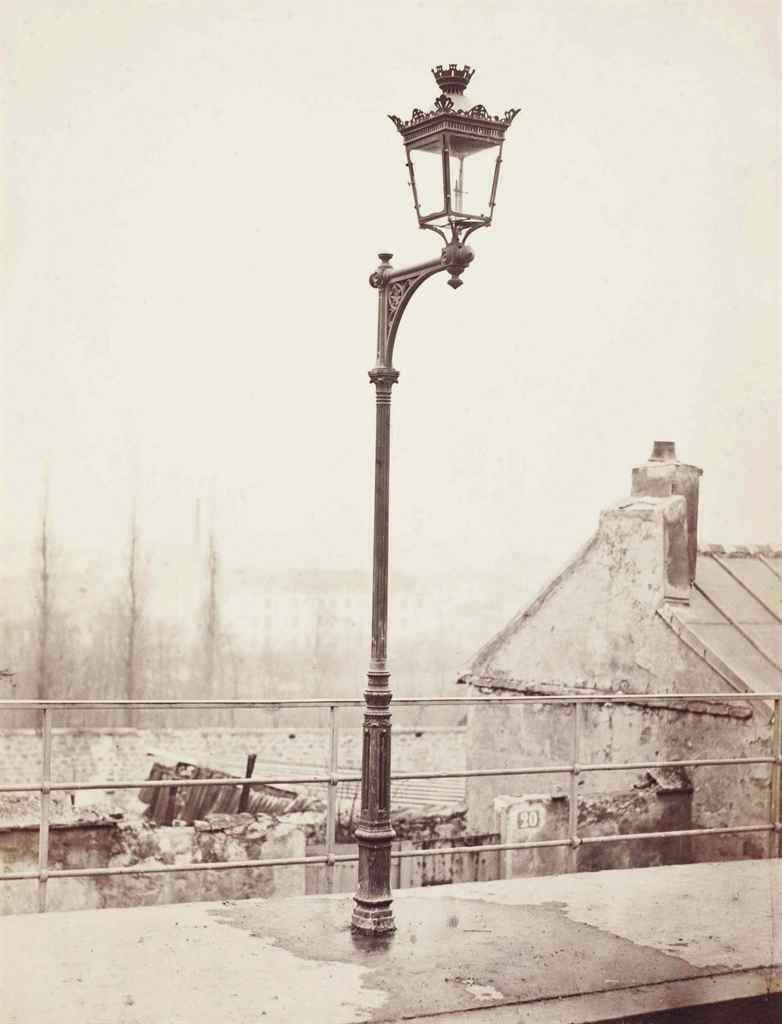Charles Marville Sky Study, Paris 1856-1857 Salt print, mounted. 6 x 8 3/8 in. (15.2 x 21.3 cm)
Provenance Collection of Joachim Bonnemaison Paris Charles Isaacs, New York and Robert Hershkowitz, Ltd., Sussex, 1996 Exhibited Charles Marville Photographer of Paris, National Gallery of Art, Washington, D.C., 29 September 2013- 5 January 2014; The Metropolitan Museum of Art, New York, 27 January- 4 May 2014; Museum of Fine Arts, Houston, 13 June– 14 September 2014 Literature National Gallery of Art, Charles Marville Photographer of Paris, pl. 26 (this print) Catalogue Essay This image of sunlit clouds over the Parisian skyline is one of a series of studies made by Charles Marville in 1856 and 1857 from his studio on the rue Saint-Dominique. Capturing the nuances of a clouded sky was a challenge for an artist in any medium, and artists succeeded or failed based upon their ability to create a credible account of the subject. The sky presented a special challenge for the photographer: the primitive equipment and limited sensitivity of the photographic materials of the day made celestial photography difficult. Through Marville’s expert handling, this image records details in both the sky and the skyline, with the dome of Les Invalides clearly visible. When he showed a selection of his sky views at the Société Française de Photographie in 1857, they were met with surprise and acclaim. Sky Study, Paris, is one of the first photographs Marville made using the wet-plate collodion process, which produced a negative image on glass that could be printed on photographic paper. Marville had previously worked with paper negatives, and the shift to glass negatives, with their greater sensitivity to light and clarity of detail, represented a significant aesthetic and technical advance. Even with the greater flexibility of this new process, photographing a subject as evanescent as clouds remained a challenge. Because of the glass-plate negative’s sensitivity to blue light, skies were typically overexposed, appearing featureless white in the finished prints. Many of Marville’s contemporaries, most famously Gustave Le Gray dealt with this by using two negatives – one exposed for the sky and the other exposed for the subject – to print a single image. Some photographers resorted to painting clouds on their negatives. This photograph demonstrates not only Marville’s high degree of technical proficiency, but his skill at creating an image that encapsulates the manmade and natural realms so compellingly. It is a modern image that presages Alfred Stieglitz’s studies of the sky made in the following century. Read More
Charles Marville Sky Study, Paris 1856-1857 Salt print, mounted. 6 x 8 3/8 in. (15.2 x 21.3 cm)
Provenance Collection of Joachim Bonnemaison Paris Charles Isaacs, New York and Robert Hershkowitz, Ltd., Sussex, 1996 Exhibited Charles Marville Photographer of Paris, National Gallery of Art, Washington, D.C., 29 September 2013- 5 January 2014; The Metropolitan Museum of Art, New York, 27 January- 4 May 2014; Museum of Fine Arts, Houston, 13 June– 14 September 2014 Literature National Gallery of Art, Charles Marville Photographer of Paris, pl. 26 (this print) Catalogue Essay This image of sunlit clouds over the Parisian skyline is one of a series of studies made by Charles Marville in 1856 and 1857 from his studio on the rue Saint-Dominique. Capturing the nuances of a clouded sky was a challenge for an artist in any medium, and artists succeeded or failed based upon their ability to create a credible account of the subject. The sky presented a special challenge for the photographer: the primitive equipment and limited sensitivity of the photographic materials of the day made celestial photography difficult. Through Marville’s expert handling, this image records details in both the sky and the skyline, with the dome of Les Invalides clearly visible. When he showed a selection of his sky views at the Société Française de Photographie in 1857, they were met with surprise and acclaim. Sky Study, Paris, is one of the first photographs Marville made using the wet-plate collodion process, which produced a negative image on glass that could be printed on photographic paper. Marville had previously worked with paper negatives, and the shift to glass negatives, with their greater sensitivity to light and clarity of detail, represented a significant aesthetic and technical advance. Even with the greater flexibility of this new process, photographing a subject as evanescent as clouds remained a challenge. Because of the glass-plate negative’s sensitivity to blue light, skies were typically overexposed, appearing featureless white in the finished prints. Many of Marville’s contemporaries, most famously Gustave Le Gray dealt with this by using two negatives – one exposed for the sky and the other exposed for the subject – to print a single image. Some photographers resorted to painting clouds on their negatives. This photograph demonstrates not only Marville’s high degree of technical proficiency, but his skill at creating an image that encapsulates the manmade and natural realms so compellingly. It is a modern image that presages Alfred Stieglitz’s studies of the sky made in the following century. Read More















Try LotSearch and its premium features for 7 days - without any costs!
Be notified automatically about new items in upcoming auctions.
Create an alert